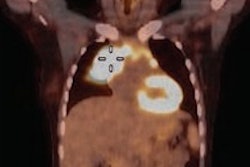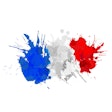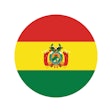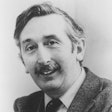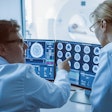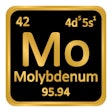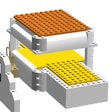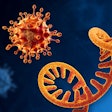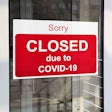
A new PET/CT network in Russia promises to make the technology more accessible, but stern challenges remain in a country that up to seven years ago only had 10 PET/CT scanners across a few major cities, said PET-Technology board member Diana Kobesova.
Traditionally, Russian patients with cancer have had to travel a long way to undergo PET/CT diagnostic procedures, and this meant that only a fraction of those requiring such studies were examined, she told AuntMinnieEurope.com. As nuclear medicine has developed, it has become available in other regions and there are now nearly 30 centers established by various companies and under different forms of ownership.
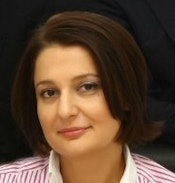 Establishing routine PET/CT in Russia is complex due to legal and budgetary hurdles, Diana Kobesova said.
Establishing routine PET/CT in Russia is complex due to legal and budgetary hurdles, Diana Kobesova said."The launch of PET-Technology diagnostics centers has made PET/CT studies available in eight more regional centers and the company is now considered the leader in the field of radionuclide diagnostics. Routine investigations with F-18 FDG account for a major share of our activities," Kobesova said.
The enterprise is co-owned by private investors and Rusnano OJSC, a company that commercializes advances in nanotechnology by turning them into viable businesses. The PET-Technology network now comprises eight diagnostic nuclear medicine centers in Moscow, Ekaterinburg, Ufa, Lipetsk, Tambov, Orel, Kursk, and Belgorod, which are located near specialized state cancer clinics. In Ufa, the company also offers cancer treatment using the CyberKnife robotic installation and more than 600 patients have received treatment over the past two years.
Since the launch of the first center in Ufa in March 2014, more than 21,000 patients have undergone PET/CT diagnostics. Patients are scanned on GE Healthcare PET/CT scanners and all studies are archived in the network's PACS system, which allows online access to all images and reports from any of its centers. The PACS is provided by German company NetRAAD, but implementation and support is provided by two other companies from Poland and Russia.
"At the moment, the PACS information system includes only studies made in our company's PET/CT centers, however we are working on a mechanism for data exchange with the state cancer institutions," Kobesova noted.
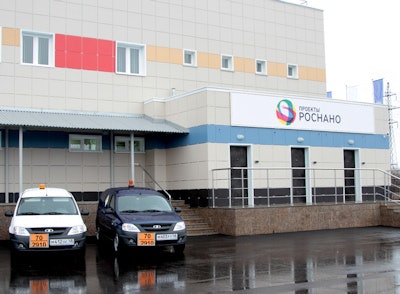 Parked outside the production center at Elets, a part of PET-Technology's fleet of adapted cars that deliver radioisotopes by land. All images courtesy of Diana Kobesova.
Parked outside the production center at Elets, a part of PET-Technology's fleet of adapted cars that deliver radioisotopes by land. All images courtesy of Diana Kobesova.The company also owns and operates two production centers in Ufa and Elets, equipped with a cyclotron with the capacity of 14 curies of activity on F-18 for two hours of the synthesis, automatic synthesis modules, and packaging and quality control of the finished product. At the moment, the company produces and uses two kinds of tracers in diagnostics: F-18 FDG (in Ufa and Elets) and F-18 Cholin (in Ufa), which are taken to centers by road and air.
Tackling obstacles
The project was an ambitious one, according to Kobesova, who described how hurdles arose at each stage due to differences between governmental structures and the legal framework around nuclear medicine.
"We faced challenges at the design, construction, and licensing stages and even had difficulties with employee training. A key issue is the low awareness of both clinical oncologists in state cancer institutions and patients with regard to nuclear medicine," she said.
At present, many regions in Russia are experiencing solvency problems, which mean the company is not yet focusing on the commercial aspect of service provision. Instead, the main stream of patients who undergo PET/CT diagnosis are paid for by the state through the system of Compulsory Medical Insurance (CMI). The CMI price of PET/CT is 450 to 500 euros, 20% to 25% lower than the commercial price of 650 to 700 euros.
 Production of radioisotopes by staff at the production center in Ufa.
Production of radioisotopes by staff at the production center in Ufa."One of our goals as a private company is making profit for our shareholders and at the moment the results of our activities allow us to fully cover our operating costs and generate positive cash flow," she explained. "We expect that the discounted payback period of the project, taking into account the initial investment, will not exceed 12 years. During the initial project modeling and planning stage three to four years ago, we expected that the proportion of high-margin commercial flow of patients would be at least 20%, but currently it is no more than 5%."
In the medium term, the company will focus on two major directions: further regional expansion and the extension of the radioisotope production line.
Over the next two to three years, new diagnostics centers will be created in Samara, Rostov, Krasnodar, Volgograd, Vologda, Sochi, Astrakhan, and Togliatti. In addition, the company is planning to launch production of F-18 FET Fluorine-18-fluorometilthyltyrosine for application in neuro-oncology, and also F-18 FLT Fluorine-18-fluorodeoxythymidine for assessing proliferative properties of the tumor process, which will allow evaluation of the effectiveness of chemotherapy and radiation therapy shortly after treatment. Kobesova also points to the company's interest in F-DOPA Fluorine-18-fluorodihydroxyphenylalanine, F-18 NaF and radioisotopes I131, LU177, and Sr89 for use in radionuclide therapy.
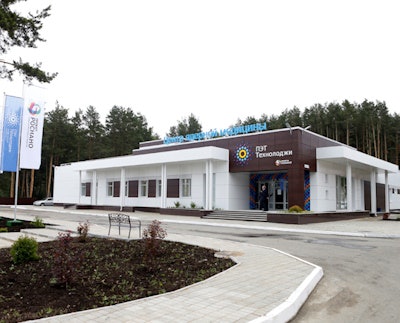 The exterior of the diagnostic center at Ekaterinburg.
The exterior of the diagnostic center at Ekaterinburg.There are also plans for greater focus on staff training. At present, all medical and technical employees undergo ongoing training and qualification in various educational and medical institutions, including Moscow State University and the GE Healthcare Center, also in Moscow. Staff are trained too in other national and international institutions including the Medicheck radioisotopes production center (Turkey), GE Healthcare medical cyclotron production plant in Uppsala, Sweden, and the University Hospital of Zurich among others.
"The main difficulties were related to finding nuclear medicine experts in Russia and organizing multistage training. We involved highly experienced doctors who had begun to implement PET/CT in our country in the training of our employees, so now we have a strong internal and external system of education in our company," Kobesova said. "Leading radiotherapists and radiologists who work for the network regularly share their experiences at national and international conferences, training courses, and internships at leading educational sites."
The company hopes to increase center capacity both through development in the equipment used for PET/CT, and also through ongoing improvement in practice.
"While we are working closely with the manufacturer for the development of technical parameters, professional execution of standard protocols -- which includes patient preparation, radioisotope injection, scanning process, and documentation -- is an area where only we can improve the efficiency of our processes," Kobesova said.
Years of underfunding
Dr. Valentin Sinitsyn, president of the Russian Society of Radiology (RSR) and head of radiology at the Federal Center of Treatment and Rehabilitation, Moscow, highlighted how for decades PET and PET/CT services were underdeveloped in Russia due to financial and organizational issues.
 Patient undergoing PET/CT at the network's diagnostic center in Ufa.
Patient undergoing PET/CT at the network's diagnostic center in Ufa."During the last decade this situation improved to some degree but at the national level, demand for PET/CT has not been satisfied," Sinitsyn noted. "Our hospital has an increasing flow of oncological patients and access to PET/CT is very important for management and treatment of many cancers cases."
He described how the center had established a partnership with PET-Technology at the end of 2015 for the provision of effective and quality services. However, in Russia today, there still remains problems that affect the further development of hybrid imaging in general.
"One issue is reimbursement for these fairly expensive examinations --- especially for those using the newer tracers -- and the funding of research in this field. Another big challenge is the education of referring medical doctors -- oncologists, radiation therapists, surgeons etc. Relationships between radiologists and nuclear medicine specialists need to be further clarified and reshaped. Education and training of our specialists in hybrid imaging needs to be substantially improved and extended and brought closer to international standards. We know that similar problems exist in many European countries in spite of their experience in PET/CT and MRI/PET. However, some countries such as the Netherlands have implemented new approaches to the training of specialists, reporting, and research in hybrid imaging," Sinitsyn said.
He added that the Russian PET/CT community was looking for support from European Society of Radiology (ESR) and the recently established European Society of Hybrid Imaging.






